The Camphor Tree's History Chronicles
Long living gigantic trees that inspired filmmaker Hayao Miyazaki and beyond
During the Meiji period, Japan experienced rapid development, leading to the transformation of vast expanses of wetland to accommodate new infrastructure—especially in cities like Nishinomiya, near Kobe. Amidst this construction, several venerable trees were designated as protected. One such tree is the majestic camphor tree located at Kaiseji Temple. Standing over 35 meters tall with a trunk measuring 5.8 meters in circumference, this camphor tree is truly awe-inspiring. Local lore suggests it was planted in 1394, coinciding with the temple's founding. Over the centuries, the tree has withstood rebellions, wars, and natural disasters, surviving for more than six hundred years.
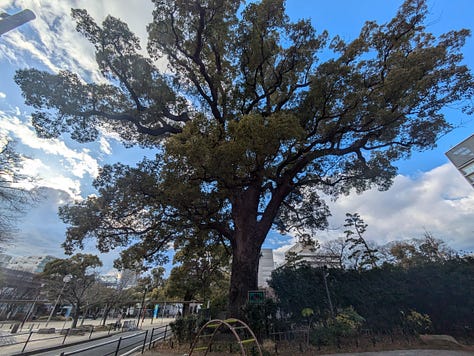
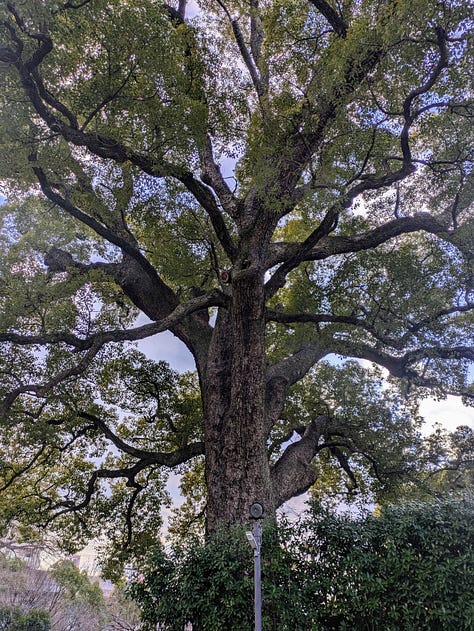
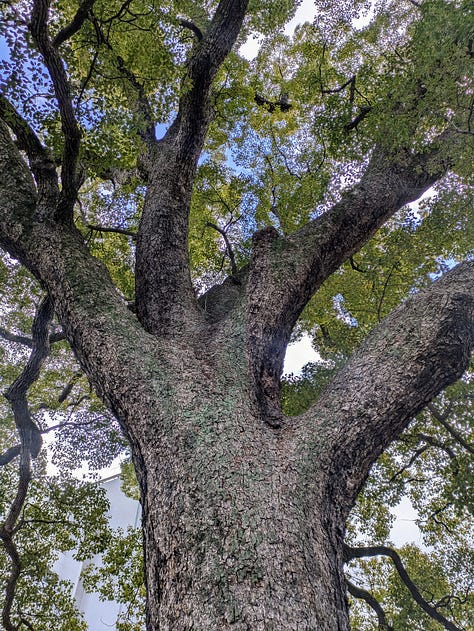
Historically, people believed that strong-smelling substances possessed spiritual power, warding off evil. The leaves of a camphor tree, when crushed, emit a distinct scent, while the smoke from burning its wood and leaves is said to have pain-relieving and insect-repellent properties. Interestingly, the tree also serves as a primary food source for certain insects. The bluebottle butterfly, for example, completes its life cycle on the camphor tree, feeding on its leaves and forming its pupa in the shape of the tree’s leaf. As a member of the Lauraceae family—which includes cinnamon, bay leaves, and avocado—the camphor tree (Cinnamomum camphora) shares their evergreen nature and medicinal uses.
In many cities along Japan’s Pacific coast, one’s first encounter with a camphor tree is often along the roadside. These broadleaf evergreens, with their glossy leaves, are common in urban areas and provide year-round greenery. Each leaf lives about a year before turning red in the fall and falling off. In spring, small yellowish flowers bloom, later giving way to purplish, berry-like fruits. Notably, camphor trees have a moderate tolerance to pollution. Several camphor trees even survived the atomic bombings of Hiroshima and Nagasaki. Research on these bombed trees reveals various abnormalities, including burns, unusual swellings, and even tilted trunks, yet they continue to thrive.
The camphor tree's evergreen leaves have long been seen as a divine dwelling place. In Shinto shrines across the country, ancient camphor trees are often regarded as sacred, marked by a shimenawa—a rope that signifies a space where a deity resides. However, in Buddhist temples like Kaiseji, there is typically no shimenawa around the trunk.
In Hayao Miyazaki’s film "My Neighbor Totoro", a gigantic camphor tree plays a significant role. In the story, two young sisters move to the countryside and befriend Totoro, a forest spirit who lives in a camphor tree. The tree, marked by a shimenawa and accompanied by a small shrine, becomes a symbol of solace for the sisters amid the complexities of their mother’s illness. Miyazaki was influenced by botanist and anthropologist Nakao Sasuke, who developed the “evergreen broad-leaved forest culture theory,” suggesting that the cultures of Japan and East Asia are shaped by their close relationship with evergreen forests. While the town of Tokorozawa—where Miyazaki resides and which inspired the film's setting—does not feature large camphor trees like Totoro’s, it is likely that Miyazaki drew inspiration from one of the many large camphor trees found in shrines and temples throughout Japan.
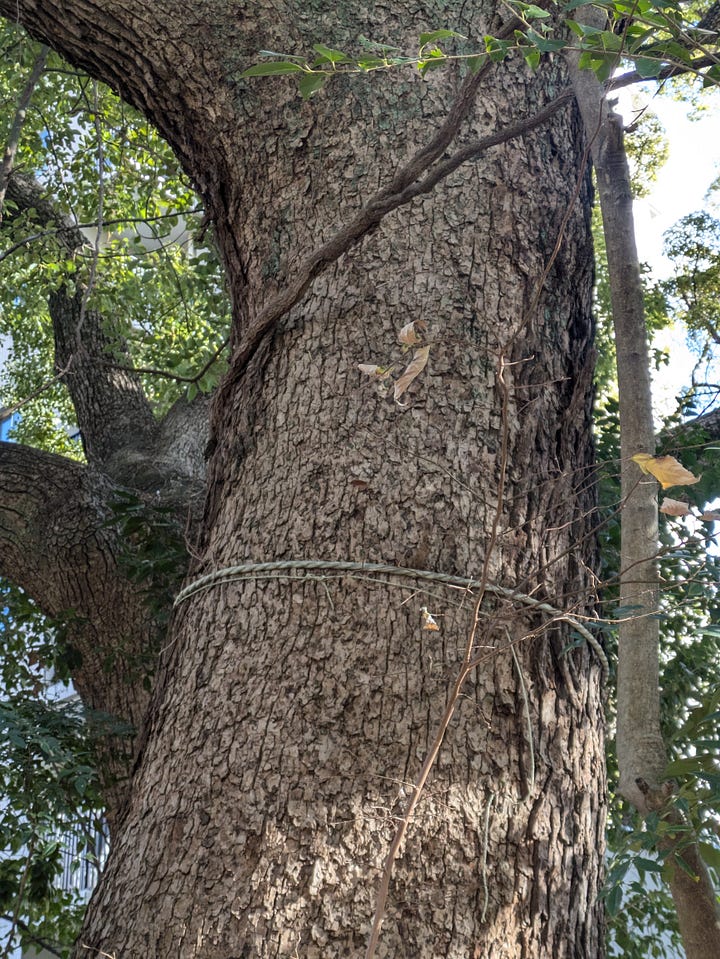
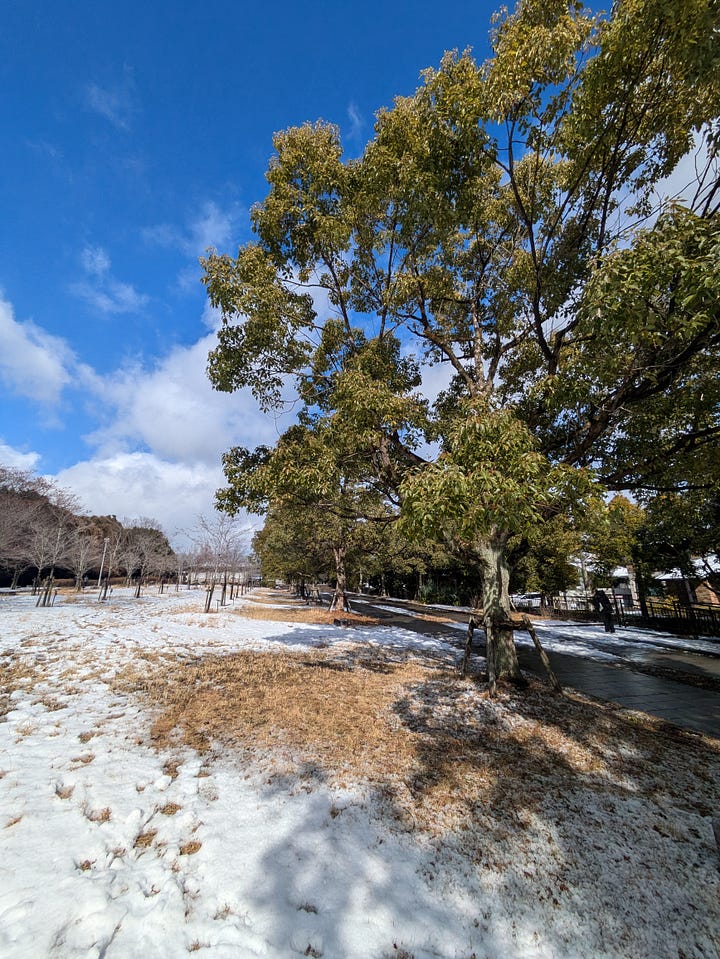
In our daily lives, we often only truly appreciate what’s around us when we take the time to focus. A poignant example is shared in a blog by a man who first recognized the grandeur of the camphor tree at Kaiseji Temple while attending a friend’s funeral there. His friend had died in the infamous 1985 crash of Japan Airlines Flight 123, which was en route from Tokyo to Osaka and carried several prominent business figures, leaving only four survivors. Although the writer had passed by Kaiseji Temple—and the camphor tree—many times before, he genuinely saw its magnificence only on that somber day. Since then, the tree has taken on personal significance for him, serving as a reminder of the connection he had with his late friend.
Camphor trees can grow to impressive sizes. According to a survey by the Ministry of Environment, six of the ten largest trees in Japan are camphor trees. In 1913, the University of Tokyo published the "Great Japanese Old Tree Ranking," where a camphor tree in Gamo, Kyushu, was named the “Yokozuna of the East.” This particular tree stands 30 meters tall and has a circumference of 33.57 meters. Its size is so remarkable that it would take several schoolchildren linking arms to encircle it.
Camphor trees can live extraordinarily long lives. The tree in Gamo is estimated to be around 1,500 years old. Trees like this one and the camphor tree at Kaiseji Temple have stood steadfast throughout vast expanses of time. It is somewhat miraculous that, despite humankind’s destructive tendencies, these trees remain in the 21st century, witnessing new histories—both social and personal—as they unfold.
From an ecological standpoint, the existence of the camphor tree involves persevering through time while generating new life and sustaining its species. We chance upon them in our own meandering, self-centered way. For centuries, camphor trees have commanded awe and respect from people across cultures and ages, silently bearing witness to human triumphs and tragedies alike. They offer us a respite from our hectic lives, inviting us to look up from our daily routines, to take accountability for our choices, and, above all, to honor our fellow living beings.
Note 1 - The 1913 report of gigantic trees was written in the style of the banzuke which is the official ranking chart for sumo wrestlers in Japan, released before each sumo tournament. It lists the rankings of all active wrestlers, from the highest rank of yokozuna to the lowest rank of maegashira, with wrestlers assigned to either the East or West region.
References
Books
神々と植物
教養としての神道
Others
https://www.biodic.go.jp/kiso/13/13_kyoju.html
https://wood.jp/8-jumoku/kyoju/hyogo/kaiseiji.html
https://nagasaki.kusunoki-project.jp/page/tree/detail_24.html
http://www.yk.rim.or.jp/~rst/rabo/miyazaki/totoro_i.html
https://arbortrarypod.com/podcast/camphor








I loved this, thank you.